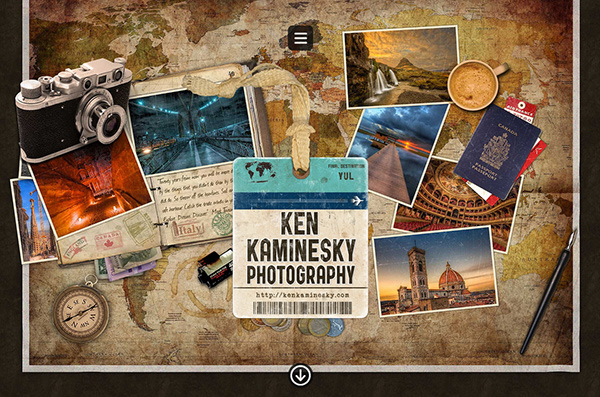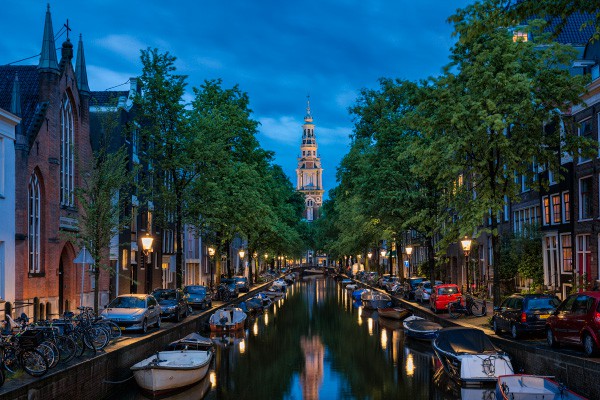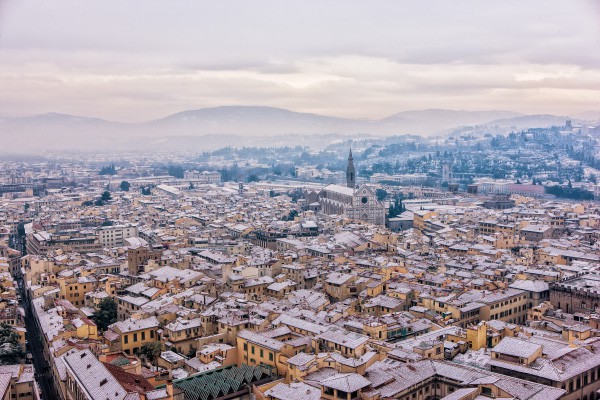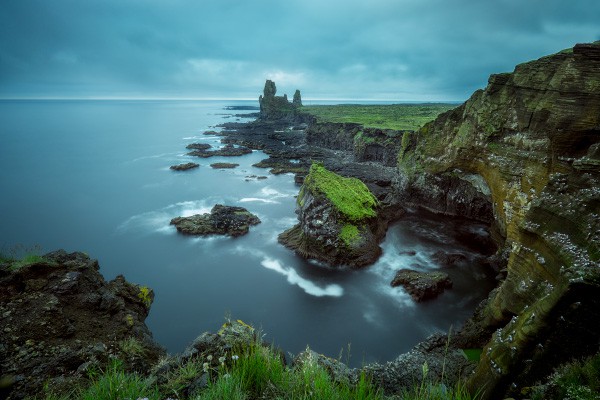Share
Want to Be a Travel Photographer? Pro Photog Ken Kaminesky Tells Us Why It’s All About The Business (and the shoes.)
This month we’re thrilled to unveil the new website of one our favorite travel photographers: Ken Kaminesky. While he’s not new to PhotoShelt...
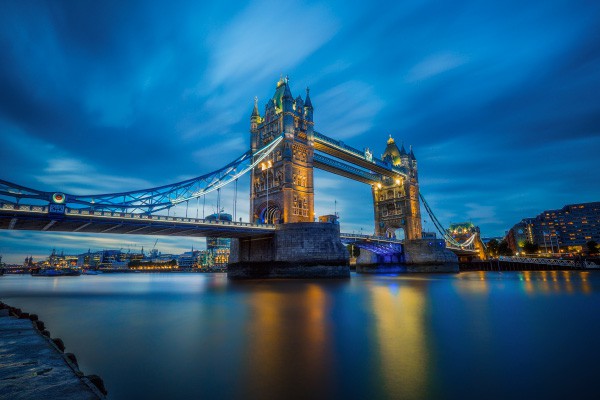
This month we’re thrilled to unveil the new website of one our favorite travel photographers: Ken Kaminesky. While he’s not new to PhotoShelter — Ken’s been selling stock via a PhotoShelter site since 2010 — a few months back he was looking to update his formal website, and our Sonnet template fit the bill. Ken’s images of sweeping skies and distant lands are positively majestic, and Sonnet, with its hovering image captions and full-bleed image display, suited Ken’s work perfectly – helping tell the whole story of his travel adventures.
With over 100,000 Twitter followers, a robust workshop schedule and partnerships with the likes of Fuji and G-Technology, Ken is also no stranger to knowing the in’s and out’s of building a photography career. We caught up with him to talk about his work and gather advice for the aspiring travel photographers out there – including what mistakes you should flat out try to avoid, and tips on how to find “the” shot. Plus, why you should never underestimate the value of a comfortable pair of shoes. Read on to find out more from Ken.
What are the must-have qualities to be a successful travel photographer?
A sense of wonder and rampant curiosity are vital as is a passion for wanting to see awesome places and experience new things. You don’t get into this field for the money but rather for the things that enrich your soul.
That being said, there is also the commitment to crazy long hours, no holidays, little time for social life and lots of uncomfortable travel days, carrying lots of gear, and being alone in unfamiliar places. Accepting the negatives as part of the job is vital. The key is to try and find some balance between the difficult or less desirable aspects of the job and the ones that make your heart beat faster with excitement when everything comes together just right. At that special moment you know that you’d rather be right there, more than anywhere else in the world.
Some other vital aspects of what it takes to be a travel photographer is a keen sense of business, the capability to communicate effectively with current and potential clients, sponsors, and colleagues, and some really comfortable shoes. Trust me on the shoes.
What mistakes did you make that you learned from early on in your career?
Wearing the wrong clothes and shoes can lead to discomfort and pain so why not give yourself every opportunity to be warm, dry, blister-free, and comfortable? Wear the right clothes and shoes for your destination and you’ll be thinking more about how to get that next shot rather than how miserable you feel.
Also working for free is something I consider a major mistake. If you work for any client for free they will always expect you to do so and you’ll be labeled as the “free” or “cheap guy”. As soon as those clients have a budget to spend on photography, they will go elsewhere because they’ll think that they can get someone better. I always counter client’s “work for free” proposals with an offer of doing the first 3 jobs at full rate and the 4th one for free. So far, I’ve had zero takers.
Another thing I can’t stress enough is how important it is to get a solid contract between you and your clients. A contract benefits all signing parties and should be a solid foundation of the established working relationship you develop with your client. Be honest, fair, and willing to compromise on certain things while holding steadfast to the things you value most. Get it on paper, get it signed, and get to work doing the best damn job you can for your client.
And lastly, putting all my eggs into one basket. It is very easy to justify spending 90% or more of your time and energy on the one thing or one client that earns you the most of your income. I was having a good run with my best client back in the mid 2000s and I pretty much abandoned all other potential income sources. It worked quite well for a while, but when my client’s latest competitor bought them out they cancelled all the contracts they had with their photographers. I lost 80% or more of my income overnight. Lesson that I learned? Diversify.
Is being a travel photographer a viable career?
I think a lot of people have the very wrong impression that people that do this kind of work for a living are jet setting all over the world, staying in 5 star hotels, eating gourmet food all the time and so on. Um… Not so.
There are just a handful of people on the planet that actually do nothing but travel photography as their job. So no, to be brutally honest, this really is not a viable career for many people. With the amount of decent photography being done by amateur photographers who basically give their work away in order to be published, it makes it all the more difficult to make travel photography a violable career choice.
I wish that these photographers who work with micro stock agencies or just give their work away would realize that they are undermining their own chances of making travel photography a career and they are also hurting the photography trade in general. Getting published (by a magazine or company that is making damn good money by publishing your work) does not make you a professional photographer. Running a viable and sustainable photography business where your photography and business skills allow you to buy and regularly upgrade photo and computer equipment, pay rent or mortgage, put food on the table, be properly insured, put something away for the future, travel (in the case of a travel photographer), etc.
Being a professional travel photographer involves significant monetary investment.
What are the outlets to make money in travel photography?
In today’s world there are many ways that one can make money with travel photography and many don’t involve taking photos at all but rather celebrating the places you’re already been to with the photos and stories you can share to a worldwide audience. Social media and blogging has helped me get my name and brand out there, and I worked hard to make that happen. Now I’m sponsored by several awesome companies who help promote my work, hire me as a consultant, work with me on speaking engagements at places like Photokina, PPE NYC, and Apple stores across Europe. They sponsor my photo walks, provide me with gear, and I’m constantly looking for ways to work with these companies on marketing projects that help celebrate travel and photography. I’m honoured to be on sponsored teams of photographers and other digital artists that I have deep respect for. The companies that I work with on a sponsorship level all share a passion for photography and the photographers that create some incredible imagery.
I also still sell image licenses and even though stock photography is no longer a main income stream it still is nice to get a good sale every once in a while. I’m currently rebuilding my PhotoShelter image archive and in the last 5 years have done better at licensing images this way than via Getty or Corbis.
Essentially, I make a living with travel photography via:
• Commercial and editorial shoots
• Running photography tours and workshops in Italy, Jordan, Iceland, and more.
• Corporate sponsorship
• Consulting
• Public speaking
• Large format print sales
• Photo licensing
• Salary of a secret agent [just kidding!]
When traveling to unknown places, how do you find “the” shot?
Depends on the place but I always do my research and do google image searches, look at online resources like 500px, other travel photographer sites, travel magazines, and ask colleagues. I’m looking for cool buildings and scenes, unique interiors, unique vantage points and ways to get to them.
Once you get to your location, scout it out. Is it a sunrise, sunset, or blue hour shot? Is there scaffolding or fences? Is it accessible or open? Proper Planning Prevents Poor Performance.
Once you think you have “the” shot, look for an alternative. Take 2 is often the keeper.
Sometimes the job is specific and I need to do something precise so that makes it easier but most of the time I’m looking for awesome in any form. A good way to get some great shots (if you have the time) is to walk everywhere. Remember when I said that bit about good shoes? You’re not going to see the place you’re visiting if you are in a bus, train, cab, car, or metro. You’ll come across some unexpected treasures this way.
What gear do you never leave home without?
• Light weight, wind and water resistant jackets and pants made by Arc’teryx.
• 3 portable G-Technology hard drives for backing up all my images files and for bringing my office with me on the road.
• Unlocked iPhone so that I can get a local SIM card.
• Neutral density and polarizer filters from Formatt-Hitech.
• Comfortable shoes and boots. Right now I’m using Oboz hiking boots and Salomon trail shoes and winter boots. My feet have never been happier.
• The more I use it, the more I love my new 15mm Zeiss lens.
• Small things can also be important. Garbage bags, ziplock bags, paper towels, baby wipes, polysporin, ibuprofen, q-tips, international electric plug adapter, power bar.
What are 2 or 3 pieces of advice would you give to an aspiring travel photographer?
Take some business courses. This is a business and if you want to survive amongst a sea of competitors who often work for free then you best have some kind of plan.
Plan some time off both at home and while on the road. Jet lag, bad food, illness, and fatigue will catch up to you.
Less is more. Clients, editors, and pretty much anyone would rather see 3 kick ass photos rather than 100 meh ones.
Be realistic. I once had a father of 3 who had 2 full time jobs and was struggling to make ends meet ask me how he could become a travel photographer. The truth is he likely can’t and if he finds a way, then I’ll stand up and applaud. Just amassing a good portfolio will cost a small fortune without some kind of backing, sponsorship, rich and generous relative, etc. This is not an easy field to get into and stay in for any period of time. Whatever you do, do your research and make a game plan. Get better at your photography and Photoshop skills before you get on the road and start spending serious coin. Eisenhower once said: “Plans are nothing; planning is everything.”
I do believe he was right.
